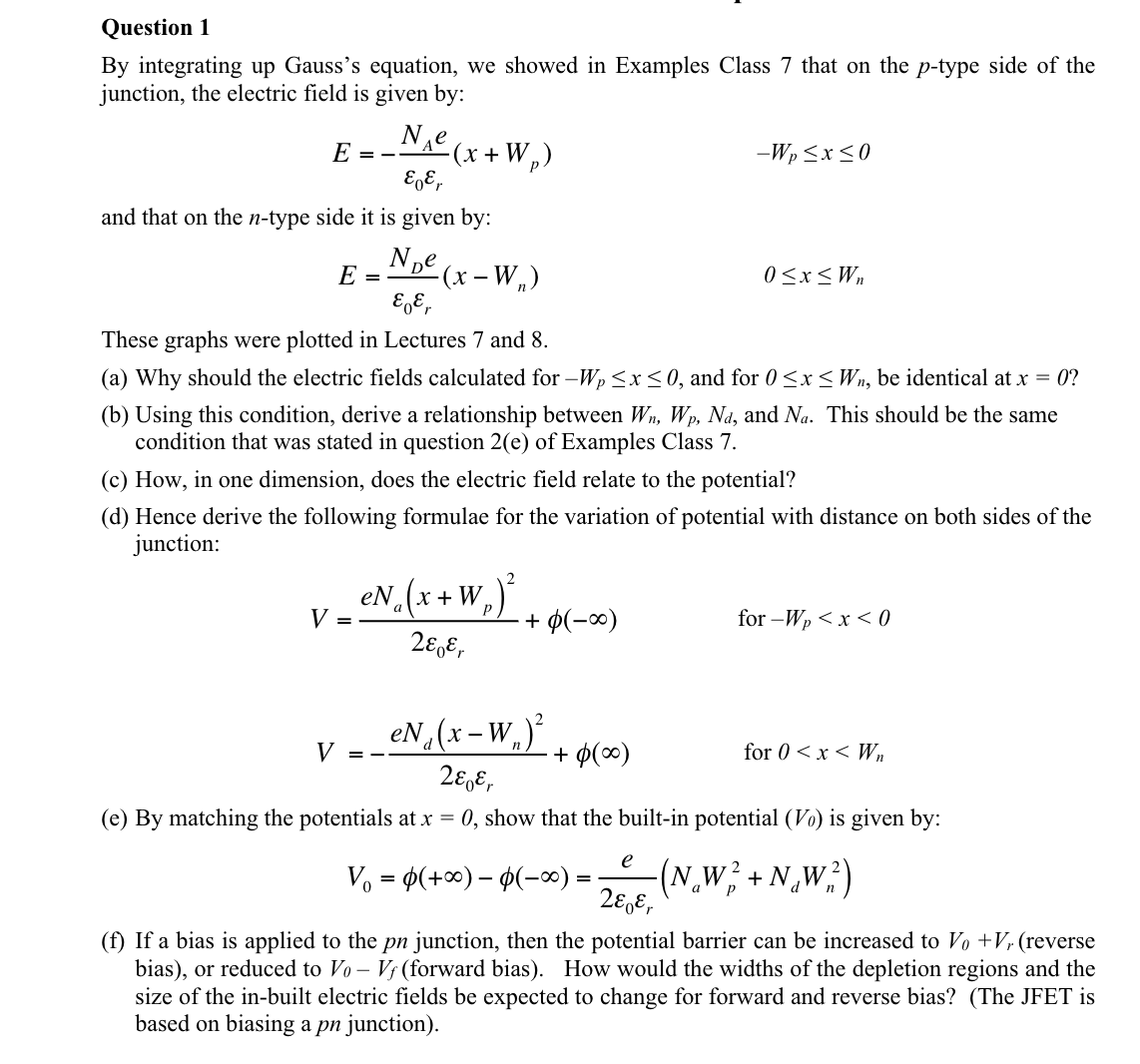Answered step by step
Verified Expert Solution
Question
1 Approved Answer
Question 1 By integrating up Gauss's equation, we showed in Examples Class 7 that on the p-type side of the junction, the electric field

Question 1 By integrating up Gauss's equation, we showed in Examples Class 7 that on the p-type side of the junction, the electric field is given by: N se E=- (x+W) and that on the n-type side it is given by: NDe E = -(x -Wn) E -Wpx0 0xWn These graphs were plotted in Lectures 7 and 8. (a) Why should the electric fields calculated for -Wp x0, and for 0 xWn, be identical at x = 0? (b) Using this condition, derive a relationship between Wn, Wp, Nd, and Na. This should be the same condition that was stated in question 2(e) of Examples Class 7. (c) How, in one dimension, does the electric field relate to the potential? (d) Hence derive the following formulae for the variation of potential with distance on both sides of the junction: V = eN(x+W) +(-) for -Wp < x < 0 V = eN (x-W) n +() for 0 < x < Wn (e) By matching the potentials at x = 0, show that the built-in potential (Vo) is given by: V = $(+) () = = e 2, (NW + N W) n (f) If a bias is applied to the pn junction, then the potential barrier can be increased to Vo +V, (reverse bias), or reduced to Vo - Vf (forward bias). How would the widths of the depletion regions and the size of the in-built electric fields be expected to change for forward and reverse bias? (The JFET is based on biasing a pn junction).
Step by Step Solution
There are 3 Steps involved in it
Step: 1

Get Instant Access to Expert-Tailored Solutions
See step-by-step solutions with expert insights and AI powered tools for academic success
Step: 2

Step: 3

Ace Your Homework with AI
Get the answers you need in no time with our AI-driven, step-by-step assistance
Get Started


